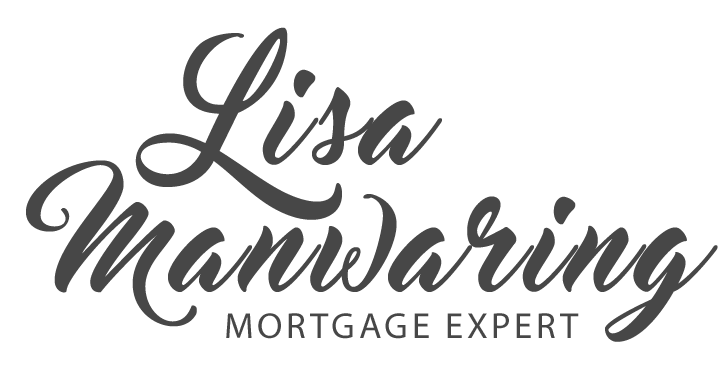Will a Temporary Loss of Income Impact Your Mortgage Post-COVID-19?
Lisa Manwaring • September 29, 2020

While unemployment peaked over 13% at the onset, it's hard to quantify just how many Canadians had some form of a reduction in their income over the last year. Especially if you're self-employed or your income varies year to year because you receive a bonus, pick up shifts, freelance, or you earn income that isn't guaranteed.
If you earn variable income, and you've seen a reduction in income because of the pandemic, this has the potential to impact how much mortgage you qualify for up to the next three years.
Here's why. For income that isn't guaranteed, when assessing your mortgage application, most of the time, lenders will look at a 2-year average. So let's say you're looking to secure a mortgage now in 2020, the lender will want to see documentation proving what you earned in 2018 and 2019, and they will take a 2-year average.
If your income is lower in 2020 because of the pandemic, once we come to tax time in 2021, your 2-year average will now include that reduction in revenue for the next couple of years, even if you are back to making what you did pre-pandemic. It will be the same case in 2022 (and into 2023), as any lender will want to see your 2-year average between 2020 and 2021. Less income in 2020 could mean qualifying for a lower mortgage amount over the next few years.
The advantage of working with an independent mortgage professional is the ability we have to represent you to several lenders who all offer different products and have different guidelines. So while one lender might be hard and fast on the 2-year average, depending on your industry, another lender might make an exception.
Additionally, depending on where the housing market is at and how much the economy has rebounded in 2021, lenders might consider COVID-19 and be flexible or implement amended guidelines. However, we will have to wait and see on that. But for the most part, if your income is lower because of COVID, it will impact you going forward, feel free to get in touch if you have any questions or hear anything in the news that you'd like clarified.
So what can you do about this today? Well, if you're currently looking to purchase a property or you have a mortgage that's almost up for renewal, or if you'd like to refinance before 2021, it's definitely in your best interest to talk with an independent mortgage professional about all your options as soon as possible.
Alternatively, if you're not looking to secure a mortgage right now, it's always a good idea to have a plan in place for when you do. It never hurts to plan ahead, especially when you have time and can make up some of the lost income with additional income in the future.
If you'd like to discuss your financial situation and see exactly how your income impacts your mortgage qualification, please don't hesitate to contact me anytime, I would love to work through everything with you!
RECENT POSTS

Need to Free Up Some Cash? Your Home Equity Could Help If you've owned your home for a while, chances are it’s gone up in value. That increase—paired with what you’ve already paid down—is called home equity, and it’s one of the biggest financial advantages of owning property. Still, many Canadians don’t realize they can tap into that equity to improve their financial flexibility, fund major expenses, or support life goals—all without selling their home. Let’s break down what home equity is and how you might be able to use it to your advantage. First, What Is Home Equity? Home equity is the difference between what your home is worth and what you still owe on it. Example: If your home is valued at $700,000 and you owe $200,000 on your mortgage, you have $500,000 in equity . That’s real financial power—and depending on your situation, there are a few smart ways to access it. Option 1: Refinance Your Mortgage A traditional mortgage refinance is one of the most common ways to tap into your home’s equity. If you qualify, you can borrow up to 80% of your home’s appraised value , minus what you still owe. Example: Your home is worth $600,000 You owe $350,000 You can refinance up to $480,000 (80% of $600K) That gives you access to $130,000 in equity You’ll pay off your existing mortgage and take the difference as a lump sum, which you can use however you choose—renovations, investments, debt consolidation, or even a well-earned vacation. Even if your mortgage is fully paid off, you can still refinance and borrow against your home’s value. Option 2: Consider a Reverse Mortgage (Ages 55+) If you're 55 or older, a reverse mortgage could be a flexible way to access tax-free cash from your home—without needing to make monthly payments. You keep full ownership of your home, and the loan only becomes repayable when you sell, move out, or pass away. While you won’t be able to borrow as much as a conventional refinance (the exact amount depends on your age and property value), this option offers freedom and peace of mind—especially for retirees who are equity-rich but cash-flow tight. Reverse mortgage rates are typically a bit higher than traditional mortgages, but you won’t need to pass income or credit checks to qualify. Option 3: Open a Home Equity Line of Credit (HELOC) Think of a HELOC as a reusable credit line backed by your home. You get approved for a set amount, and only pay interest on what you actually use. Need $10,000 for a new roof? Use the line. Don’t need anything for six months? No payments required. HELOCs offer flexibility and low interest rates compared to personal loans or credit cards. But they can be harder to qualify for and typically require strong credit, stable income, and a solid debt ratio. Option 4: Get a Second Mortgage Let’s say you’re mid-term on your current mortgage and breaking it would mean hefty penalties. A second mortgage could be a temporary solution. It allows you to borrow a lump sum against your home’s equity, without touching your existing mortgage. Second mortgages usually come with higher interest rates and shorter terms, so they’re best suited for short-term needs like bridging a gap, paying off urgent debt, or funding a one-time project. So, What’s Right for You? There’s no one-size-fits-all solution. The right option depends on your financial goals, your current mortgage, your credit, and how much equity you have available. We’re here to walk you through your choices and help you find a strategy that works best for your situation. Ready to explore your options? Let’s talk about how your home’s equity could be working harder for you. No pressure, no obligation—just solid advice.

Starting from Scratch: How to Build Credit the Smart Way If you're just beginning your personal finance journey and wondering how to build credit from the ground up, you're not alone. Many people find themselves stuck in the classic credit paradox: you need credit to build a credit history, but you can’t get credit without already having one. So, how do you break in? Let’s walk through the basics—step by step. Credit Building Isn’t Instant—Start Now First, understand this: building good credit is a marathon, not a sprint. For those planning to apply for a mortgage in the future, lenders typically want to see at least two active credit accounts (credit cards, personal loans, or lines of credit), each with a limit of $2,500 or more , and reporting positively for at least two years . If that sounds like a lot—it is. But everyone has to start somewhere, and the best time to begin is now. Step 1: Start with a Secured Credit Card When you're new to credit, traditional lenders often say “no” simply because there’s nothing in your file. That’s where a secured credit card comes in. Here’s how it works: You provide a deposit—say, $1,000—and that becomes your credit limit. Use the card for everyday purchases (groceries, phone bill, streaming services). Pay the balance off in full each month. Your activity is reported to the credit bureaus, and after a few months of on-time payments, you begin to establish a credit score. ✅ Pro tip: Before you apply, ask if the lender reports to both Equifax and TransUnion . If they don’t, your credit-building efforts won’t be reflected where it counts. Step 2: Move Toward an Unsecured Trade Line Once you’ve got a few months of solid payment history, you can apply for an unsecured credit card or a small personal loan. A car loan could also serve as a second trade line. Again, make sure the account reports to both credit bureaus, and always pay on time. At this point, your focus should be consistency and patience. Avoid maxing out your credit, and keep your utilization under 30% of your available limit. What If You Need a Mortgage Before Your Credit Is Ready? If homeownership is on the horizon but your credit history isn’t quite there yet, don’t panic. You still have a few options. One path is to apply with a co-signer —someone with strong credit and income who is willing to share the responsibility. The mortgage will be based on their credit profile, but your name will also be on the loan, helping you build a record of mortgage payments. Ideally, when the term is up and your credit has matured, you can refinance and qualify on your own. Start with a Plan—Stick to It Building credit may take a couple of years, but it all starts with a plan—and the right guidance. Whether you're figuring out your first steps or getting mortgage-ready, we’re here to help. Need advice on credit, mortgage options, or how to get started? Let’s talk.


